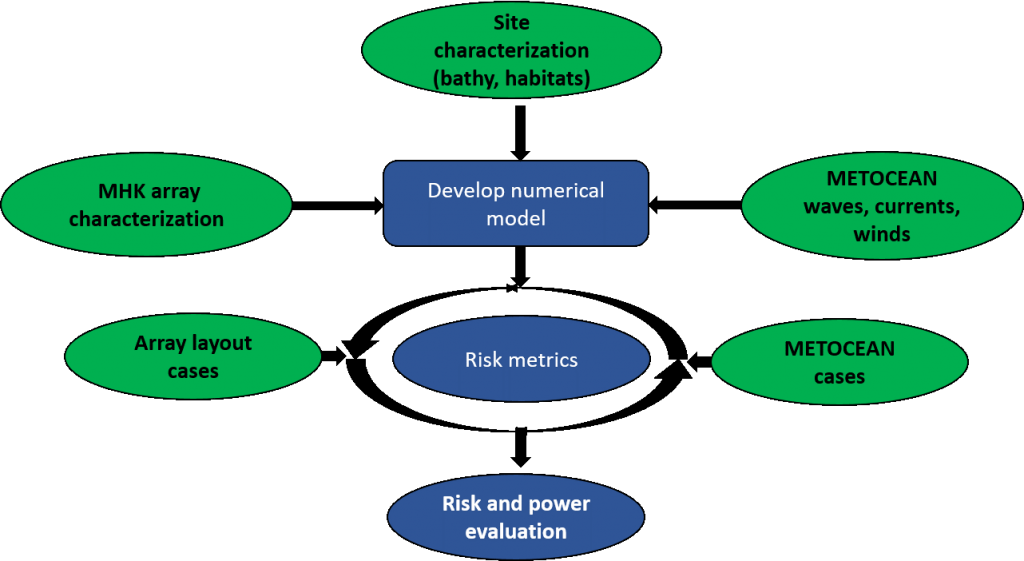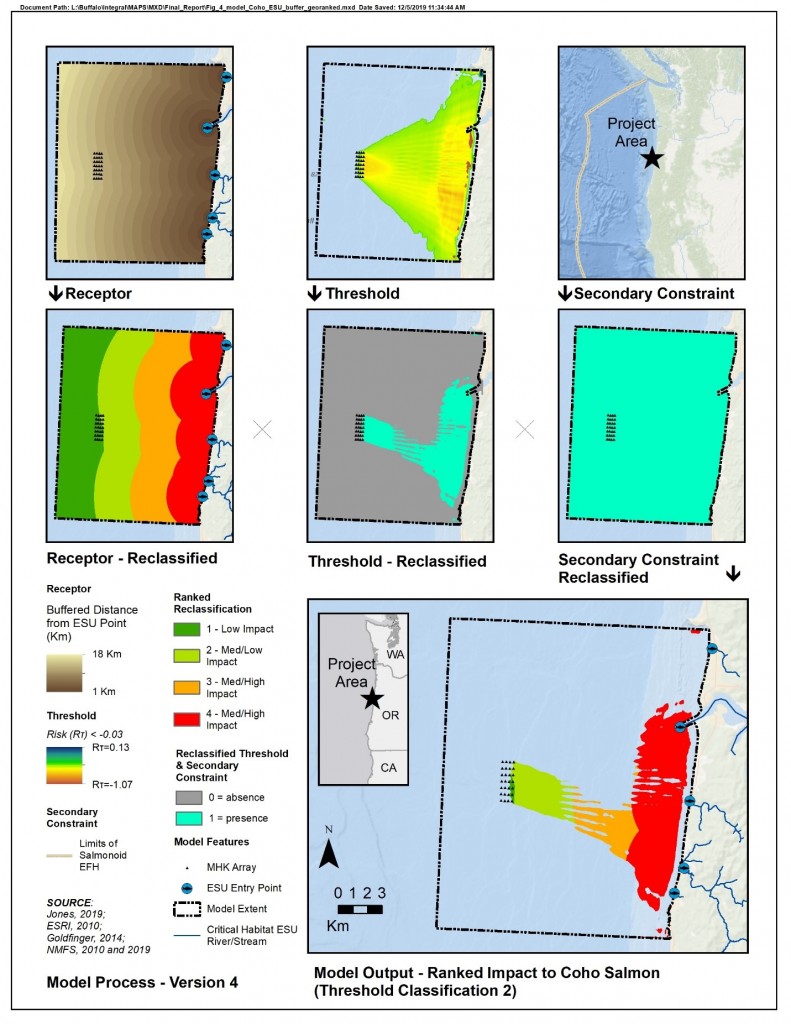To accurately understand physical processes and their potential relationship to environmental stressors at a marine hydrokinetic (MHK) site, a Spatial Environmental Assessment Tool (SEAT) has been developed by combining numerical models and spatial analysis techniques to facilitate understanding of the potential risks involved within environmental assessments. This tool has been used to assess changes to environmental conditions such as sediment mobility, larval motility, and bed elevation. The quantification of these changes allows for an evaluation of MHK array configurations with respect to its potential environmental risk. This tool bridges the gap between regulators’ requirements and developers’ needs to optimize turbine array lay outs that maximize power production while minimizing unwanted environmental change.

The SEAT incorporates device specific parameters, site-specific hydrodynamic conditions, and local receptor information to assess the potential for environmental change within a system. Results from a successful SEAT application can inform developers and regulators on the risk of environmental change associated with deploying a device or array in a site of interest. The Sandia developed state-of-the-science numerical models (SNL-SWAN, SNL-Delft3D-CEC, Paricousti) leveraged in the SEAT analysis can account for the effects of device size, shape, power extraction, sound generation, and, in the case of CEC devices, turbulence generation on hydrodynamics and interrelated processes. By assessing the changes to the system on multiple time scales, risk metrics specific to receptors of interest can be developed and communicated on a range of spatial scales.

- Integral Consulting
- Ecology and Environment Integral Consulting
- H. T. Harvey Ecology and H. T. Harvey Fish and Aquatics
- UAF
- Verdant Power
- ORPC
- Montana State University
- University of Baylor
- Mott McDonald
Contact
Jesse Roberts
jdrober@sandia.gov
(505) 844-5730